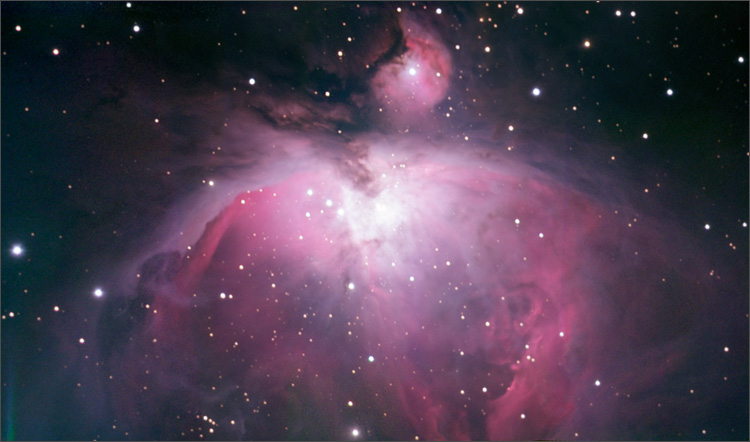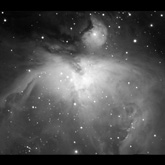The Great Orion Nebula (designated M42 by Charles Messier) is the largest and brightest nebula in the Northern hemisphere and one of the easiest objects to capture.
Capturing M42
Finding M42 is a breeze. Just aim for the fuzzy patch of light in the sword of Orion. But capturing the great nebula can be difficult depending on your equipment. The Orion Nebula is so big (larger than the full moon) that you may have problems fitting the whole thing in your field of view. You can always shoot a partial view. As long as you can fit the "head" of the nebula (actually designated M43) and some of the two wings, then you should end up with an iconic shot.
For the shot on this page I combined three separate images into a mosaic.
Processing the Image
The great dynamic range of M42 calls for layer masks. Use the Curves command in Photoshop to brighten the faint outer nebulosity, but use a layer mask so that the central part of the nebula is not blown out.

